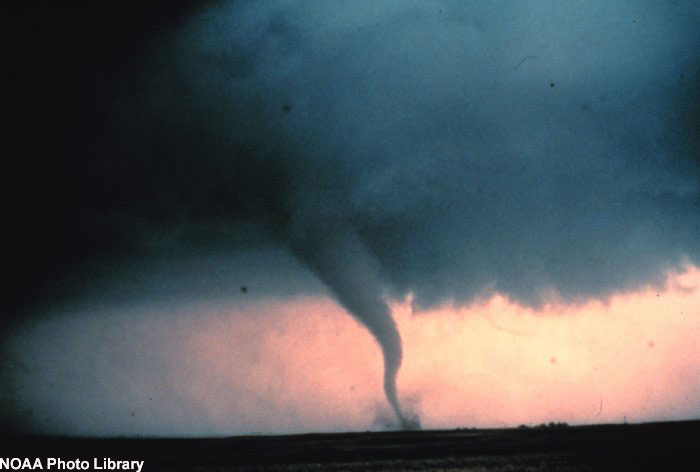Tame Tornadoes Might Generate Power

Tornadoes are wild, destructive natural phenomena - right? Not necessarily, according to engineer Louis Michaud, who believes that he has found a way to create full-size "tame" tornadoes that could be used to generate electricity.
Michaud has spent forty years studying tornadoes and is convinced that it is possible to create small tornadoes on demand using a "vortex engine," a device he has patented in both the U.S. and Canada. A full scale vortex engine would produce a funnel cloud that would stretch several kilometers into the atmosphere. The artificial tornado would be powered at the base by waste heat (ideally from a power-generating facility).
The waste heat from the plant would be carried to a nearby vortex engine facility by hot water. A small amount of electricity would be used to blow dry air across the hot water pipes. The heated air would rise with a spinning motion, gathering energy as it rises, creating a vortex. As it gathers momentum, it begins to pull air in through the fans, which would now function as turbines that generate electricity (see base plan).
As long as waste heat is supplied at the base, the vortex will keep spinning, and power will be generated.
According to Michaud, a commercial plant between 200 meters and 400 meters in diameter could generate 200 megawatts of power; it would cost about $60 million to construct. However, about $20 million of that cost would be offset because the generating plant would not require a cooling tower.
Michaud's vortex engine has received a fair amount of support from the scientific community. The University of Western Ontario's wind-tunnel laboratory, through a seed investment from OCE's Centre for Energy, is studying the dynamics of a one-meter version of Michaud's vortex engine.
Professor Nilton Renno, of the department of atmospheric, ocean and spaces sciences at the University of Michigan, has spent his career studying tornados and water spouts. He says there's no reason why Michaud's vortex engine wouldn't work.
Get the world’s most fascinating discoveries delivered straight to your inbox.
Michaud has formed a private corporation, AVEtec, to seek for investor funding. Top atmospheric scientists from the University of Oxford, the University of Cambridge, and MIT have joined the AVEtec advisory board.
The idea has applications beyond replacement of cooling towers. Vortex engines located in the ocean on the equator could use warm tropical water to provide an endless source of energy.
Besides energy harvesting, vortex engines would propel hot air high into the atmosphere where it could radiate more easily back into space. In other words, they would act like air conditioners to counter global warming.
Science fiction writers Frederik Pohl and C.M. Kornbluth write about the unexpected uses of tornado force winds in their 1952 classic The Space Merchants. In the story, savvy marketers try to make life on planet Venus more palatable for settlers by harvesting the strong Venusian winds with Hilsch vortex tubes:
And Development had not developed but found a remarkable little thing called a high-speed Hilsch Tube. Using no power, it could refrigerate the pioneers' homes by using the hot tornadoes of Venus. (Read more about Hilsch vortex tubes)
Consider these other "forecasts" by sf writers:
- Weather as Art Writer John Varley thought about how we might become weather artists; it turns out there are real weather artists who try to make what beauty they can from nature's worst storms.
- Chinese Government To Control Olympic Weather Who knew that China spends $100 million per year on weather-modification programs?
Via The Star; thanks to reader Your Obedient Serpent for the tip on this story.
(This Science Fiction in the News story used with permission from Technovelgy.com - where science meets fiction.)
- Image Gallery: Tornado Country
- Top 10 Killer Tornadoes
- Tornado Science, Facts and History
 Live Science Plus
Live Science Plus





